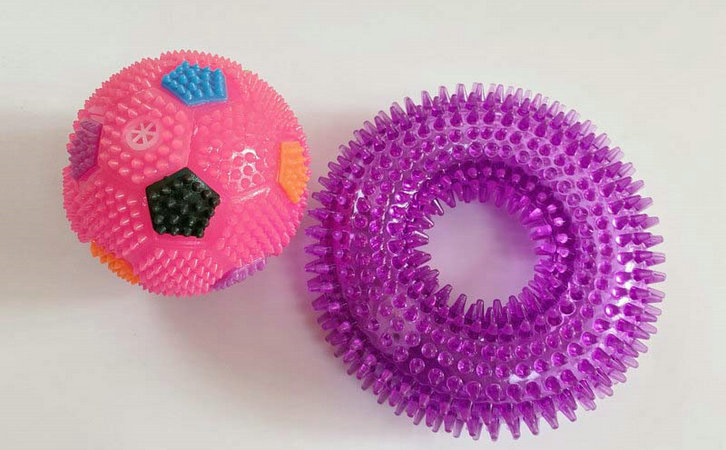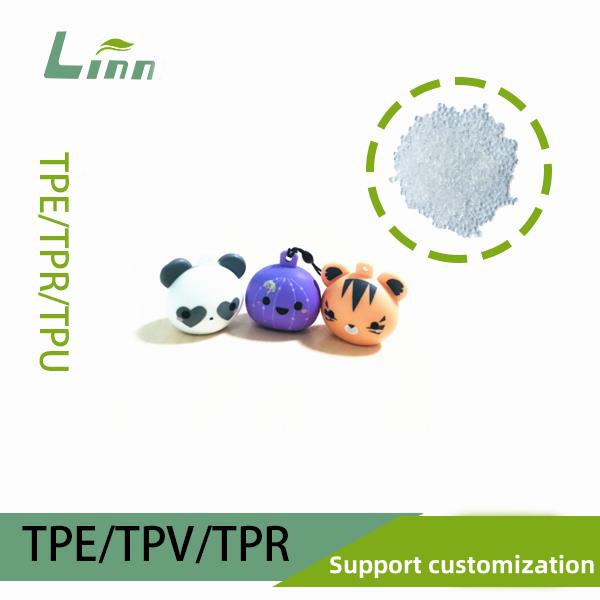As someone who’s been in the injection molding industry for years, I know how frustrating air bubbles in TPE (thermoplastic elastomer) products can be. Not only do they ruin the appearance, but they can also weaken the product and raise concerns about quality. I’ve faced this issue myself, tried countless solutions, and learned from plenty of mistakes. Today, I’m sharing my experience to help you tackle air bubbles effectively and get your production back on track.

Why Do Air Bubbles Form in TPE Injection Molding?
Air bubbles don’t just appear out of nowhere—they’re typically caused by issues with materials, processes, molds, or equipment. In essence, bubbles form when gases get trapped inside the product during molding and can’t escape. These gases may come from:
Moisture or volatiles in the material: If TPE isn’t properly dried, residual moisture vaporizes at high temperatures, creating bubbles.
Poor mold venting: Inadequate mold design or clogged vents trap gases inside.
Improper process parameters: Issues like excessive injection speed, insufficient pressure, or inadequate cooling time.
Environmental factors: High workshop humidity or improper material storage can introduce moisture.
Material degradation: Overheating TPE can cause it to break down, releasing gases.
Understanding these causes helps us address the problem systematically. Below, I’ll break down solutions across four key areas: materials, processes, molds, and equipment.
1. Start with the Material: Ensure TPE is Dry and Moisture-Free
TPE, especially certain grades like TPU-based TPE, is prone to absorbing moisture. If the material contains water, it turns into vapor during high-temperature molding, forming bubbles. This was a common pitfall I encountered early in my career.

1.1 Dry the Material Thoroughly
Before every molding run, I make sure the TPE is properly dried. Here’s my approach:
Use a dehumidifying dryer: Place TPE pellets in a dryer set to 80-100°C for 2-4 hours, depending on the material grade and ambient humidity.
Verify drying effectiveness: After drying, I take a small sample, heat it to molding temperature in a clear glass container, and check for bubbles. If bubbles appear, drying needs more time.
Store properly: Dried TPE should be used immediately or stored in sealed containers to prevent reabsorption of moisture.
1.2 Check Material Quality
Once, I dealt with persistent bubbles despite thorough drying, only to discover the TPE batch contained volatile additives. To avoid this:
Choose reliable suppliers: Work with reputable TPE suppliers to ensure consistent material quality.
Request Material Safety Data Sheets (MSDS): Review the material’s composition and processing requirements to select the right grade for molding.
Conduct small-scale trials: Test new material batches in small runs to confirm they’re bubble-free before full-scale production.
2. Optimize the Molding Process: Fine-Tune Parameters to Reduce Gas Trapping
The molding process is often where bubble issues arise. I once had a case where one machine consistently produced bubbly TPE parts, but another didn’t. After investigating, I found the injection speed and holding time were off.

2.1 Adjust Injection Speed and Pressure
Reduce injection speed: High speeds can trap air in the melt, increasing bubble risk. I typically lower the speed by 10-20% for smoother mold filling.
Increase injection pressure: Boosting pressure by 5-10 MPa compresses gases, reducing bubbles.
Use staged injection: For complex molds, I apply a slow-to-fast injection profile to allow gases to escape.
2.2 Optimize Holding and Cooling Times
Extend holding time: The holding phase helps push gases out. I usually add 0.5-1 second, depending on part thickness.
Increase cooling time: Insufficient cooling can trap gases inside as the part solidifies. Try extending cooling by 10-20% and monitor results.
2.3 Control Melt Temperature
TPE is typically processed at 180-230°C. Too high a temperature can degrade the material, releasing gases. My tips:
Lower the melt temperature by 5-10°C and check if bubbles decrease.
Use an infrared thermometer to regularly verify barrel and nozzle temperatures align with settings.
Here’s a table summarizing my process parameter adjustments for TPE molding:
Parameter | Common Issue | Adjustment Suggestion |
|---|---|---|
Injection Speed | Too fast, traps air | Reduce by 10-20%, use staged injection |
Injection Pressure | Insufficient, gases not compressed | Increase by 5-10 MPa |
Holding Time | Too short, gases not expelled | Extend by 0.5-1 second |
Cooling Time | Insufficient, gases trapped | Increase by 10-20% |
Melt Temperature | Too high, material degrades | Lower by 5-10°C, keep within 180-230°C |
3. Improve Mold Design: Enhance Venting
Mold design plays a critical role in gas escape. I once worked on a project where surface bubbles plagued the parts. After inspection, we found the mold lacked sufficient venting, trapping gases in the cavity.

3.1 Check and Add Vents
Vent placement: Add vents at the mold’s fill-end, parting line, or deep cavities, with a depth of 0.02-0.04 mm.
Regular cleaning: Vents can clog with oil or residue. I schedule compressed air cleaning every shift.
Add vent channels: For complex molds, incorporate 0.1-0.2 mm deep vent channels along the parting line for better results.
3.2 Optimize Mold Structure
Minimize dead zones: Sharp corners or dead zones trap gases. I recommend rounding edges or adding transitions.
Consider vacuum molds: For high-precision parts, vacuum venting systems, though costly, can eliminate bubbles entirely.
3.3 Control Mold Temperature
Low mold temperatures can cause the melt to solidify too quickly, trapping gases. I keep mold temperatures at 30-50°C and use a mold temperature controller for consistency.
4. Maintain Equipment: Ensure Stable Machine Performance
Equipment condition can also cause bubbles. I once traced a bubble issue to a worn screw, which caused uneven melt mixing and gas entrapment.

4.1 Inspect Screw and Barrel
Screw wear: Regularly check for screw and barrel wear, replacing them if damaged.
Clean the barrel: Before switching materials, I clean the barrel with purging compounds to prevent residue-related gas formation.
4.2 Ensure Hydraulic System Stability
Check hydraulic oil: Aging oil can cause pressure instability. I replace it every 6 months.
Calibrate pressure sensors: Verify that the machine’s actual pressure matches the set value.
5. Control the Environment: Manage Workshop Humidity
The workshop environment can significantly impact TPE molding. In humid seasons, like the rainy months in southern regions, TPE absorbs moisture more readily. My solutions:
Control humidity: Use industrial dehumidifiers to keep workshop relative humidity below 50%.
Store materials properly: Store TPE in sealed warehouses immediately upon arrival to avoid exposure.
Monitor conditions: Use a hygrometer to track workshop temperature and humidity, logging data for consistency.
6. Case Study: How I Solved a Bubble Issue
To make this practical, let me share a real-world example. Last year, we took on a TPE soft-grip handle order, but trial runs showed internal bubbles. Here’s how we tackled it:
Material check: We found the TPE wasn’t dried long enough. Extending drying from 2 to 4 hours reduced bubbles significantly.
Process tweak: Lowering injection speed by 15% and extending holding time by 0.8 seconds further minimized bubbles.
Mold fix: Adding two vents at the mold’s end eliminated remaining bubbles.
Environment control: High workshop humidity was an issue. After activating dehumidifiers, the problem vanished.
The parts passed inspection, and the client was thrilled. This taught me the value of a systematic approach, addressing materials, processes, molds, and environment step by step.

7. Long-Term Prevention Strategies
Beyond fixing bubbles, I recommend proactive measures to keep them from recurring:
Develop Standard Operating Procedures (SOPs): Standardize drying, process settings, and mold maintenance for consistent execution.
Train regularly: Hold sessions on TPE molding advancements to upskill your team.
Log data: Record process parameters, environmental conditions, and quality outcomes to build a reference database.
Collaborate with suppliers: Stay in touch with TPE suppliers to understand material changes and adjust processes accordingly.
Frequently Asked Questions
To wrap up, here are answers to common questions about TPE molding bubbles:
1. Do TPE grades affect bubble formation?
Yes, different TPE grades have varying moisture absorption and processing traits. For example, TPU-based TPE absorbs more moisture than SEBS-based TPE. Adjust drying and parameters based on the grade.
2. Are bubbles on the surface or inside? What’s the difference?
Surface bubbles: Often caused by poor mold venting or excessive injection speed.
Internal bubbles: Typically due to moisture, high melt temperatures, or insufficient holding pressure. Identify bubble location visually, then target the cause.
3. How can I tell if bubbles are from moisture or process issues?
Heat a small TPE sample in a clear container to molding temperature. If bubbles appear, it’s moisture. If not, focus on process or mold adjustments.
4. Will adding vents affect part appearance?
Properly sized vents (0.02-0.04 mm) won’t impact appearance. Oversized vents may cause flash, so adjust gradually during trials.
5. Why do bubbles appear in large-scale but not small-scale production?
This could stem from improper material storage, humidity fluctuations, or parameter drift during extended runs. Strengthen environmental controls and equipment maintenance.
Conclusion
Air bubbles in TPE injection molding can be a headache, but by addressing material drying, process optimization, mold design, equipment maintenance, and environmental control, you can eliminate them. My advice? Don’t rush to change everything at once. Instead, troubleshoot methodically, pinpoint the root cause, and apply targeted fixes. Keeping detailed records and building preventive habits will also save you time and boost product quality in the long run.
If you have more questions about TPE molding, feel free to reach out! I hope this guide helps you conquer bubbles and achieve flawless parts.
